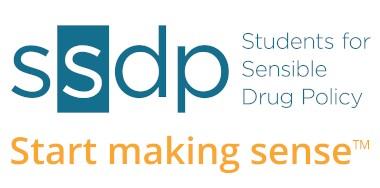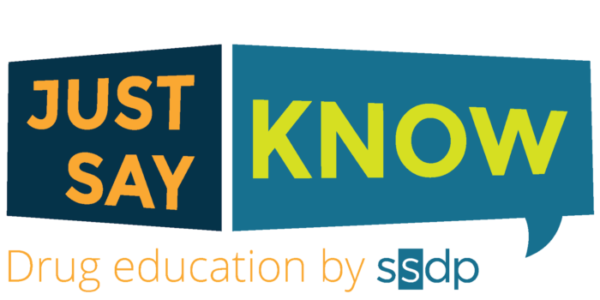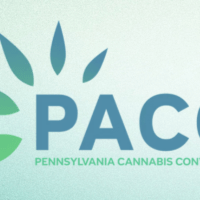Welcome to the Just Say Know monthly roundup! Here, our Just Say Know intern, Matthew Aragón ’16, will be sharing the latest in drug education and harm reduction each month.
A special note from SSDP’s Director of Drug Education, Vilmarie Fraguada Narloch, PsyD ‘09:
Hello friends,
SSDP’s Just Say Know Peer Education Program was developed out of deep frustration that our educational system, our teachers, and all the powers that be significantly FAILED us by not providing us with adequate information about drugs and drug use during our youth. Instead, we received the same drug war propaganda and misinformation that continues to plague health classes in our schools and communities to this day and contributes to the lives lost throughout the overdose epidemic. What started out as a doctoral dissertation and then determination to create the “anti-DARE” with my friend France Fu ‘11 and other experts and SSDPers, has grown into an incredible program where any member of SSDP can become certified to disseminate the very best harm reduction education available to their peers. I am incredibly grateful to SSDP for believing in this vision and supporting the development of this program, and extremely proud of the work we have done in creating this program.
Sadly, however, I will be leaving my position at SSDP this week. Before I leave, I am excited to announce that we have completed the much anticipated third edition of the Peer Education Training Curriculum, as well as some updated Just Say Know harm reduction modules. Operations Director, Luis Montoya ‘16 will be the main point of contact for the program after my departure, and is looking forward to identifying creative ways we can keep the program alive!
Thank you for believing in harm reduction and science-based drug education!
Sensibly,
Vilmarie
For now, please enjoy this final Just Say Know Monthly Roundup!
Spring has sprung and so have festivals! After two years of inconsistent gatherings due to COVID-19, many of our favorite music festivals are back in full swing. Please be sure to check your drugs, practice harm reduction, and take care of each other!
Research Updates
Psychedelics
The U.S. Drug Enforcement Agency last month proposed the addition of two psychedelic substances, DOI (2,5-dimethoxy-4-iodoamphetamine) and DOC (2,5-dimethoxy-4-chloroamphetamine), to Schedule I of the Controlled Substances Act. While the two substances have existed for many decades, their use has remained relatively unpopular among the general public. Since DOI is, however, regularly used in animal and in-vitro experimentation, the DEA’s proposed rule could create new barriers for neuroscience and psychedelic research. The proposed rule is open for public comment on federalregister.gov until June 10th, 2022, and can be found here.
A joint research study from scientists at the University of California San Francisco and Imperial College London, published last month, sheds new light on psilocybin’s potential role as a depression treatment. By analyzing fMRI brain scans of nearly 60 study participants before and after psilocybin-assisted psychotherapy treatments, researchers were able to identify changes in brain activity and connection that correlate with reduced symptoms of depression. This data may eventually help researchers deepen their understandings of the relationship between brain activity and thought patterns. The news release, published on the University of California San Francisco’s website, can be found here.
A recent study published in Science Advances titled, “Trips and neurotransmitters: Discovering principled patterns across 6,850 hallucinogenic experiences,” used artificial intelligence to evaluate 6,850 different experience reports published on Erowid.org, and from this data, “identify which neurotransmitter receptors are linked to words associated with specific drug experiences.” Considered to be “the world’s largest study on psychedelics and the brain,” this research may provide a foundation for the future applications of artificial intelligence in psychedelic reseach. News stories, published in MIT Technology Review and Science Daily, can be found here and here, respectively.
A new study by researchers at Johns Hopkins Medicine evaluated the relationship between psychedelic experiences and consciousness. The study, titled, “A Single Belief-Changing Psychedelic Experience Is Associated With Increased Attribution of Consciousness to Living and Non-living Entities,” found that following a significant psychedelic experience, participants were more likely to attribute consciousness to “various entities including non-human primates, quadrupeds, insects, fungi, plants, inanimate natural objects, and inanimate manmade objects.” The news story, published in Science Daily, can be found here.
Alcohol
A recent research study published in the Journal of the American Medical Association suggests that even moderate alcohol consumption is associated with a small increased risk of cardiovascular issues. This research challenges the long-held theory that regular consumption of small amounts of alcohol, such as red wine, may actually help improve cardiovascular health. The news story, published in the Washington Post, can be found here.
Researchers with the National Institute on Alcohol Abuse and Alcoholism, a division of the National Institutes of Health, recently published a study titled, “Alcohol-Related Deaths During the COVID-19 Pandemic.” This research study found that alcohol-related deaths increased by 25 percent between 2019 and 2020 – a staggering figure when compared to “an average annual increase of 3.6 percent in alcohol-related deaths between 1999 and 2019.” The news story, published in The New York Times, can be found here.
Cannabis
A recent study by researchers at Massachusetts General Hospital found that patients “using cannabis products to treat pain, anxiety, and depression failed to improve these symptoms while doubling the risk of developing the addictive symptoms of cannabis use disorder.” Study co-author, Jodi Gilman, Ph.D., stated that the findings of this study suggest that “there needs to be better guidance to patients around a system that currently allows them to choose their own products, decide their own dosing, and often receive no professional follow-up care.” The press release, published by Massachusetts General Hospital, can be found here.
Researchers at the University of California, Berkeley recently published a study titled, “Fine Particulate Matter Exposure From Secondhand Cannabis Bong Smoking,” which found that smoking cannabis inside of a home “generated 4 times greater [fine particulate matter] concentrations than [indoor] cigarette or tobacco hookah smoking.” The study’s findings might suggest that additional research into the health impacts of secondhand cannabis smoke exposure is warranted. The news story, published in USA Today, can be found here.
A new study published in the American Journal of Medicine found an association between current cannabis use and a lower resting heart rate. The authors of the study clarified that “the findings appeared to be transient because past cumulative exposure to cannabis was not associated with heart rate,” and added that the study’s findings add to the “growing body of evidence suggesting a lack of deleterious association of cannabis use at a level typical of the general population on surrogate outcomes of cardiovascular disease.” The news story, published in Complex, can be found here.
Overdose Prevention
Late last month, the Biden Administration submitted the 2022 National Drug Control Strategy to congress, comprehensively outlining the federal government’s plans for addressing rising rates of opioid overdose deaths. The plan includes the expansion of harm reduction services like naloxone and fentanyl testing access, improvement of drug policy data systems, as well as law enforcement-based supply reduction strategies. The White House Fact Sheet about the publication can be found here.
A research letter was recently published in the Journal of the American Medical Association, analyzing trends in drug overdose deaths among US adolescents from January 2010 to June 2021. The analysis found that between 2019 and 2020, fatal overdoses among adolescents increased by 94%, from 492 deaths in 2019 to 954 deaths in 2020. Additionally, the study found that fentanyl-related deaths increased from 253 in 2019 to 680 in 2020. This sharp rise in overdose deaths among US adolescents is attributed to the increased prevalence of counterfeit prescription medications, which often contain fentanyl rather than the expected drug. The news story, published in NPR, can be found here.
A recent study by researchers at the University of California, Los Angeles identified a substantial increase in the prevalence of a new adulterant in the United States’ illicit opioid supply over the past several years. Xylazine, a non-opioid tranquilizer used in veterinary medicine, has been involved in numerous opioid overdose deaths across the country. Xylazine-contaminated opioids present unique risks to people who inject drugs, such as naloxone-resistant overdose, and its emergence raises concerns over the increasingly dangerous and unpredictable state of the illicit opioid market. The news story, published in TIME, can be found here.
The White House recently released a fact sheet detailing the Biden Administration’s plans for addressing addiction and the overdose epidemic. Some of the administration’s proposed plans include the expansion of harm reduction services such as syringe access, fentanyl testing, naloxone distribution, and medication-assisted-treatment programs.
In early March, the Associated Press published an article showcasing the United States’ first official safe injection facility, located in New York City.
A recent research study by researchers at Columbia University Mailman School of Public Health, evaluating results from the 2019 National Survey on Drug Use and Health, found that “among those who may have needed opioid use treatment, only 28 percent received medication for [opioid use disorder].” Senior co-author of the study, Hillary Samples, Ph.D., stated that their findings “provide further evidence that investments are needed to increase [medication for opioid use disorder] prescribing and referrals.” The news story, published by The Columbia University Mailman School of Public Health, can be found here.
A new study by researchers at the University of California, Los Angeles evaluating increases in US drug overdose mortality rates before and during the COVID-19 pandemic found that drug overdose death rates among Black Americans are now higher than that of white Americans. Study co-author and addiction researcher at UCLA, Joseph Friedman, stated that “for the first time we see [overdose death rates among Black communities] overtaking the overdose rate among white individuals.” The news story, published in NPR, can be found here.
Researchers at New York University recently published a study examining trends in law enforcement seizures of fentanyl-containing pills and powders found that “the number of seized pills containing fentanyl has climbed dramatically: more than 2 million fentanyl-laced pills were confiscated in the last quarter of 2021, nearly 50 times the number seized in early 2018.” The news release, published by EurekAlert!, can be found here.
.
Interested in learning more about how SSDP approaches drug education? Check out our Just Say Know Peer Education program, and contact luis@ssdp.org with questions.







